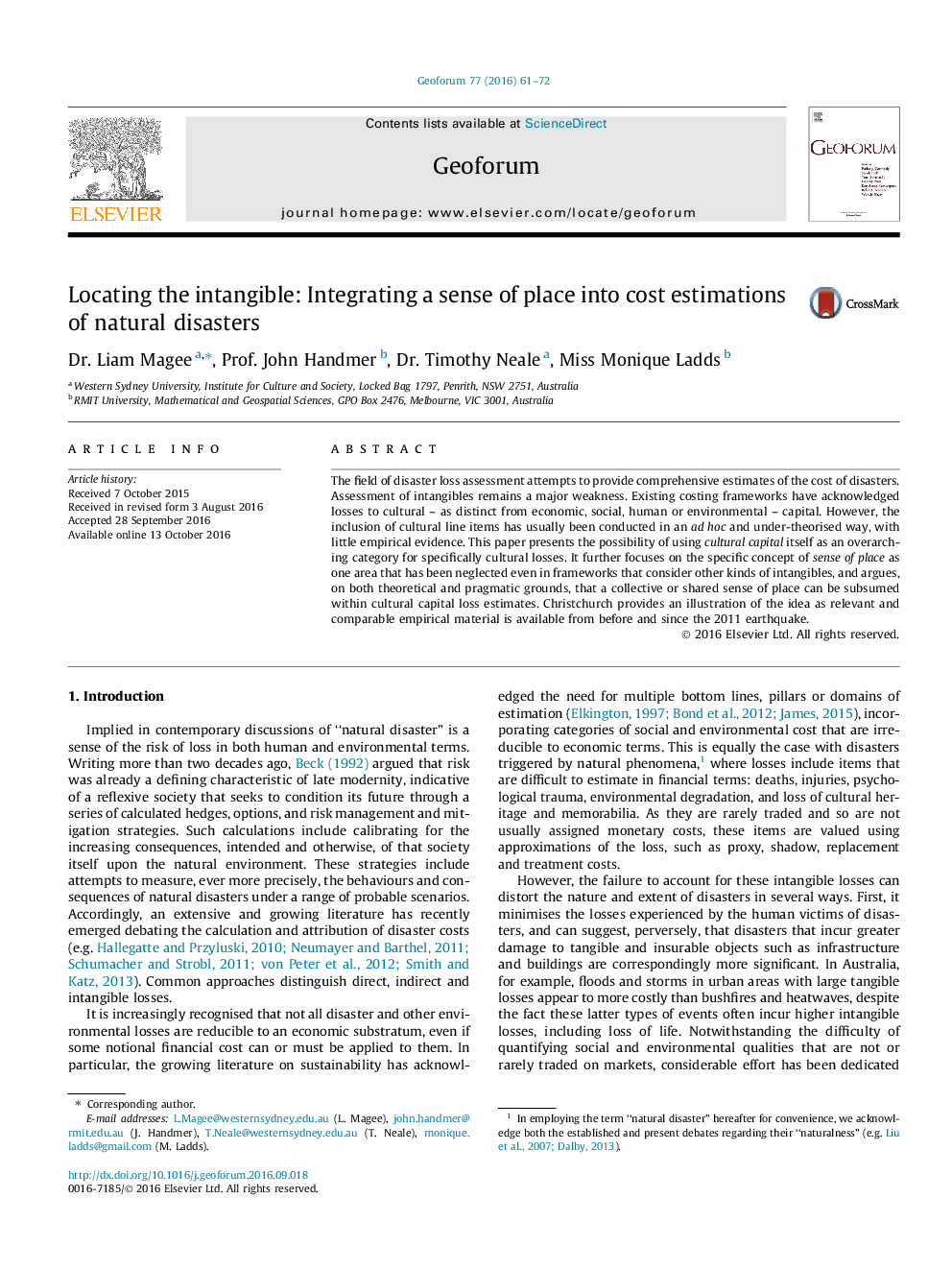| Article ID | Journal | Published Year | Pages | File Type |
|---|---|---|---|---|
| 5073531 | Geoforum | 2016 | 12 Pages |
â¢Assessment of intangibles remains a major weakness in economic cost estimates of natural disasters.â¢Cultural capital can function as a unifying concept for an important subset of intangible (along with direct and indirect) assets.â¢Shared sense of place is a further area of such intangible assets that can be meaningfully subsumed within cultural capital loss estimates.â¢With significant quality of life data available before and since the 2011 earthquake, Christchurch provides a useful 'natural experiment' that illustrate changes to intangible assets, including a sense of place.
The field of disaster loss assessment attempts to provide comprehensive estimates of the cost of disasters. Assessment of intangibles remains a major weakness. Existing costing frameworks have acknowledged losses to cultural - as distinct from economic, social, human or environmental - capital. However, the inclusion of cultural line items has usually been conducted in an ad hoc and under-theorised way, with little empirical evidence. This paper presents the possibility of using cultural capital itself as an overarching category for specifically cultural losses. It further focuses on the specific concept of sense of place as one area that has been neglected even in frameworks that consider other kinds of intangibles, and argues, on both theoretical and pragmatic grounds, that a collective or shared sense of place can be subsumed within cultural capital loss estimates. Christchurch provides an illustration of the idea as relevant and comparable empirical material is available from before and since the 2011 earthquake.
